October 20 is just another day to anyone who is not a vintage sports card collector. It just happens to be Mickey Mantle’s birthday from 1931. Mickey Mantle is without a doubt one of the greatest vintage baseball players of the game. His 1952 Topps card has the prized honor of having, so far, being the world’s most expensive sports card and the only card to break above the $10 million line.
There is still a question that needs to be asked and which is a frequent discussion at card shows — Do Mickey Mantle cards deserve the premium they get over all these other great players? And perhaps more importantly, will this vintage card premium continue in the more distant years ahead?
Mickey Mantle cards in every year during the 1950s and 1960s get a higher premium at the same grades over great peers like Willie Mays, Hank Aaron, Ted Williams, Stan Musial, Roberto Clemente and a dozen other stars who are all household names for older baseball fans and vintage sports card collectors. This pertains to any base card from the same year that is not one of these great super-star rookies or second year cards. And there are some players who simply have older cards.
Please do not think for a second that this is some Mantle bash out of right field. It isn’t. I personally own most of Mantle’s Topps and Bowman cards and the movie “61*” featuring the Maris/Mantle home run chase for Ruth’s 60 homers had a huge role in getting me back into vintage collecting after a near-decade hiatus.
Mickey Mantle’s baseball career was 18 seasons and his entire MLB run was with the New York Yankees. It turns out that Yankees cards generally command a premium on their own because of the whole New York City thing, and it turns out that they were either almost always in the pennant race or in the World Series. Mantle’s career ended with a .298 batting average, he racked up 2,415 hits, and he had 536 home runs and 1,509 RBIs over his career with a total of 1,676 runs scored. Other stats include a Gold Glove award, 3 MVP awards (plus 4 more at runner-up as #2 or #3), and he was on the All Star team basically every year he played a full season.
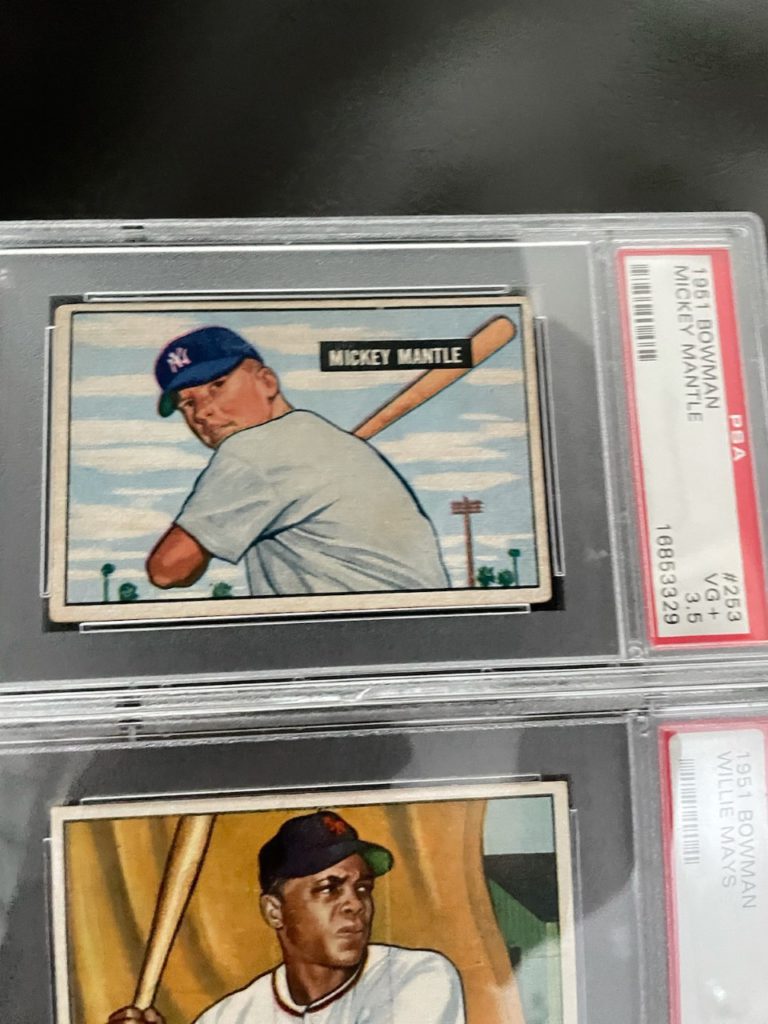
Mantle was a speed demon as a rookie, and prior to his knee injury he was touted as being one of the fastest men ever to run from the batters box to first base. And on top of that Maris/mantle home run chase for Ruth’s 60th, Mantle’s 18 career World Series home runs is a record that still holds (followed by Ruth (15), Berra (12), Snider (11) and Jackson/Gehrig (tied at 10). Mantle’s WAR is also very high at 110.2.
So, why would Mickey Mantle even be asked about if he deserved the premium to so many other baseball greats from the 1950s and 1960s? This goes far beyond the expectations of the $12.6 million sale after the fact.
Let’s go over some of the greats that played baseball at much of the same time. Mantle was coming into baseball at the same time Joe DiMaggio was coming out. Baseball teams had only started to integrate with black baseball players on their teams in the prior few years. And baseball was on its way to becoming a truly national sport as the New York Giants and Brooklyn Dodgers headed to California as jet planes became more common.
WILLIE MAYS
Willie Mays was honestly a better player than Mickey Mantle. I have even directly pondered whether Mays cards should be worth more than Mantle cards before. Mays didn’t burn the candle at both ends partying and he was able to play in more games per season for the first 15 or so years of his career. Mays missed most of 1952 and all of 1953 due to military service during the Korean War. Mays ended with a .301 batting average but up thru Mantle’s retirement it was much better as he never went above .300 after 1966 Thru 1973. Mays ended his career with 3,293 hits, 660 homers, as well as 1,909 RBI. Mays was rookie of the year in 1951, racked up 2 MVP awards, had 11 Gold Glove awards, was also on every All-Star team from 1954 to 1972. He ended with a 165.1 WAR.
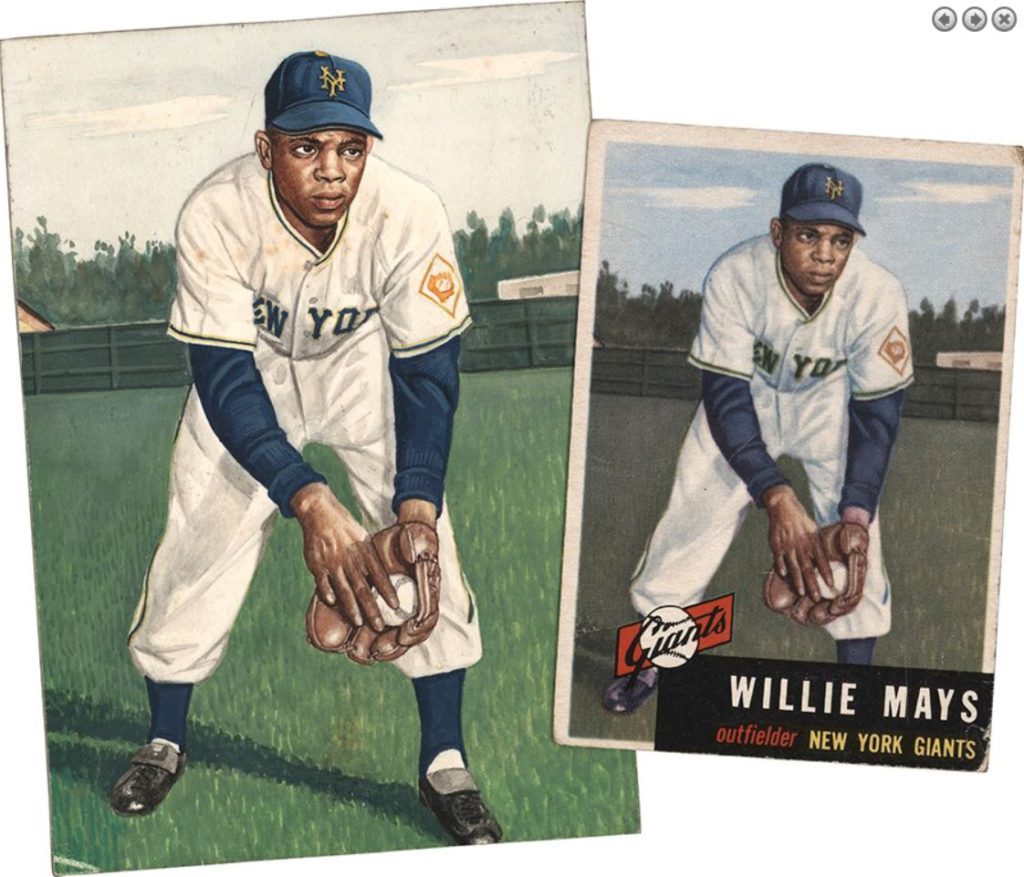
Mays was known for that famous “The Catch” and he was the highest paid baseball player by salary through the 1960s.
Mays is the only player we can have an apples-to-apples comparison on for that 1951 Bowman Rookie card, but the Mays in a PSA 4 will average around $13,000 versus about $18,000 for the same year and grade in the Mantle rookie.
ELSEWHERE: 7 Vintage Baseball Cards Every Collector Wants to Own!
HANK AARON
The man who ended up becoming the true Home Run King was Hank Aaron. It took a lot more total at-bats, more games per season and more seasons than it took Babe Ruth. Despite the quality of the record, his 755 homers blew out Babe’s 714 homers. Where Aaron shines is in his .305 career average, his 3,771 hits, and 2,297 RBI and 2,174 runs. He also has a 143.0 WAR.
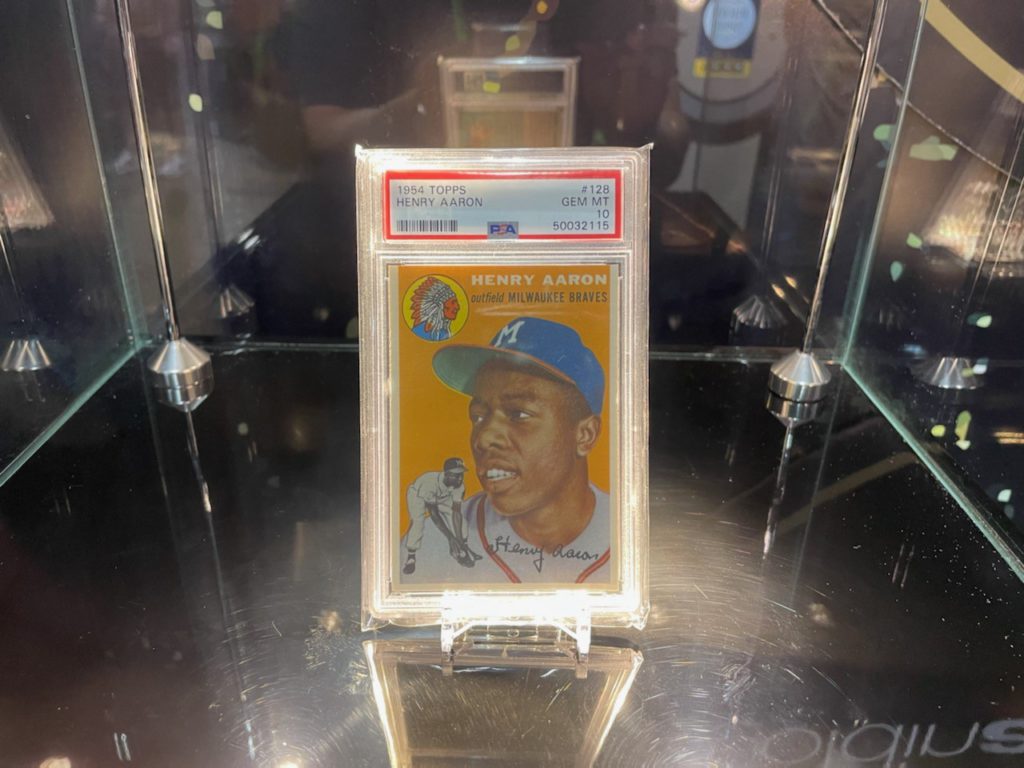
One interesting aspect about Aaron’s home run tally is that he never hit over 45 homers in a single season. He still had 8 seasons above 40 homers and 3 seasons with 36 to 39 homers.
Hank Aaron’s 1954 Topps rookie card in a PSA 4 will average from $4,000 to $4,500 at the present time. There are more of his cards available than the early Mays and Mantle cards, and perhaps supply/demand has something to do with this.
The PSA 10 Hank Aaron rookie above was taken at the Goldin booth at the 2021 National Sports Collectors Convention. It is hard to estimate what the value of that card may be, but one view here even without a PSA 10 example is that Aaron’s rookie card could become the next $1 million card!
ROBERTO CLEMENTE
Pittsburgh does have a favorite all-time baseball player, and it’s not Honus Wagner. It is Roberto Clemente, whose premature and tragic death kept his career from going beyond the exactly 3,000 career hits. What does the nickname of “The Great One” tell you?
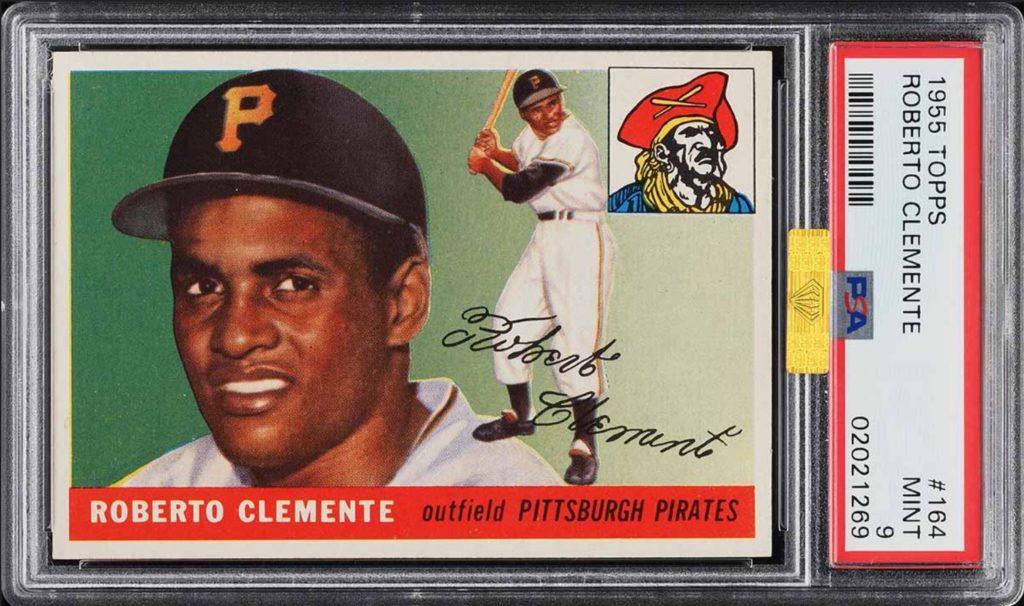
Clemente’s death at age 38 implies that he could have gone on to achieve much more towards great baseball stats. He ended with a career .317 batting average, had 1.417 runs and 1,306 RBIs. His last 4 year’s averaged .337 versus an average of .324 for the prior 4 years, although with fewer games per year and more dominance in the league these stats may not matter as much. Either way, Clemente was Pitsburgh’s favorite. He was MVP once, has 12 Gold Glove awards and only missed one All-Star game from 1960 to 1972.
A PSA 4 1955 Topps Clemente rookie may run $2,750 to $3,000 at the current time. That said, his rookie card prices begin to skyrocket upwards after the PSA 6 and PSA 6.5 as centering and print quality are usually severe blemishes for prime collectors. One of his rookies just joined the $1 million card club to prove the point.
TED WILLIAMS
The Splendid Splinter was perhaps one of baseball’s greatest players ever. He was certainly that “since Babe Ruth” and he was the last batter to have the magical .400 batting average for a single season. It is hard to fathom this when you evaluate his stats, but because of World War II and the Korean War there are almost 5 baseball seasons missing from his career between the ages of 24 and 34.
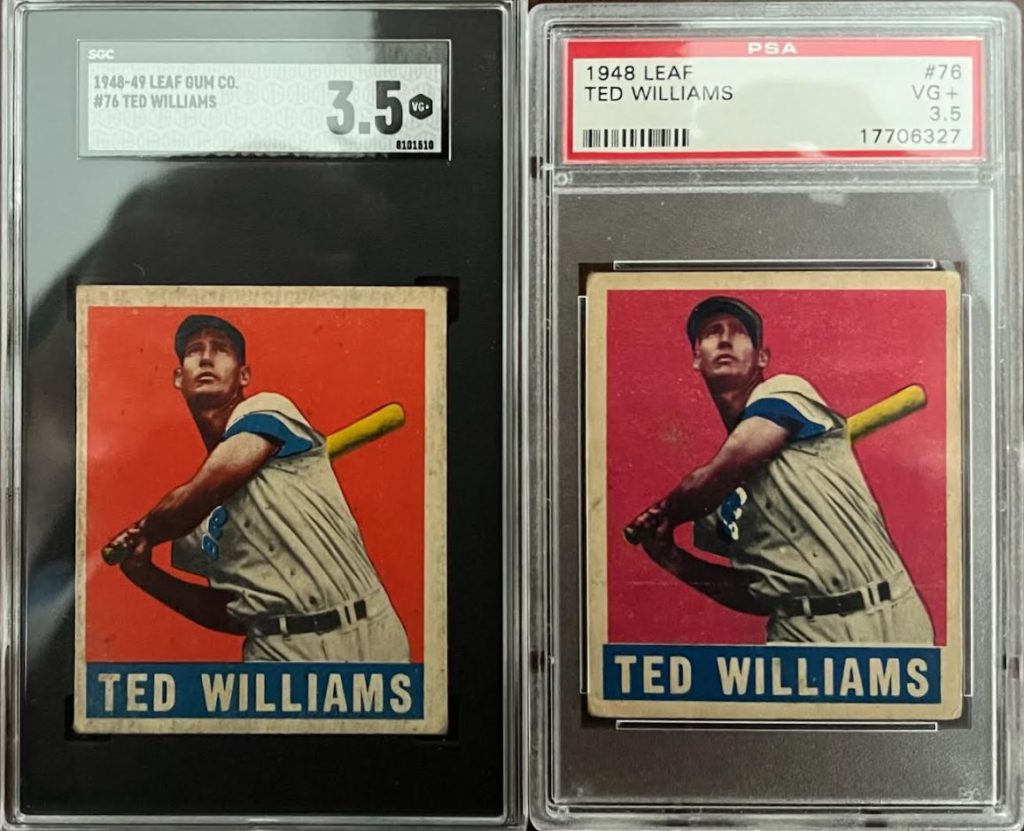
Ted’s career ended with a miraculous .344 batting average. He ended with 2,654 career hits, had 1,798 runs, had 1,839 RBIs and 521 career homers. He led the league in batting average in 6 different years and his on-base percentage of .482 is still a record — imagine almost every other time he batted he was getting on base. He also has a 122.0 WAR.
One issue that hurt Ted was that he was who he was. He was in a constant fight with the sports writers and frankly he wasn’t exactly chummy with his hometown fans. The 1939 Play Ball Ted Williams card is considered his most common rookie card, and a PSA 4 in this card with decent centering is likely to cost $6,000 to $7,000. That’s not bad considering there are only 1,025 PSA graded examples in all grades without the 143 “+” and 44 “Q” graded examples included. Are Ted Williams cards undervalued or underappreciated?
STAN MUSIAL
Stan “The Man” Musial was perhaps one of the most consistent hitters of his era. He was known for being extremely consistent and he never had a season under .300 until he was 38 years old. Despite playing before World War II and his only missing year being 1945 for the War, Stan Musial’s most widely recognized rookie cards are not until 1948 despite a rare 1946 card. And one issue which may ironically hurt Musial card values is that there just were not many Musial cards made until 1959. And we found “the perfect Stan Musial collection” even before this.
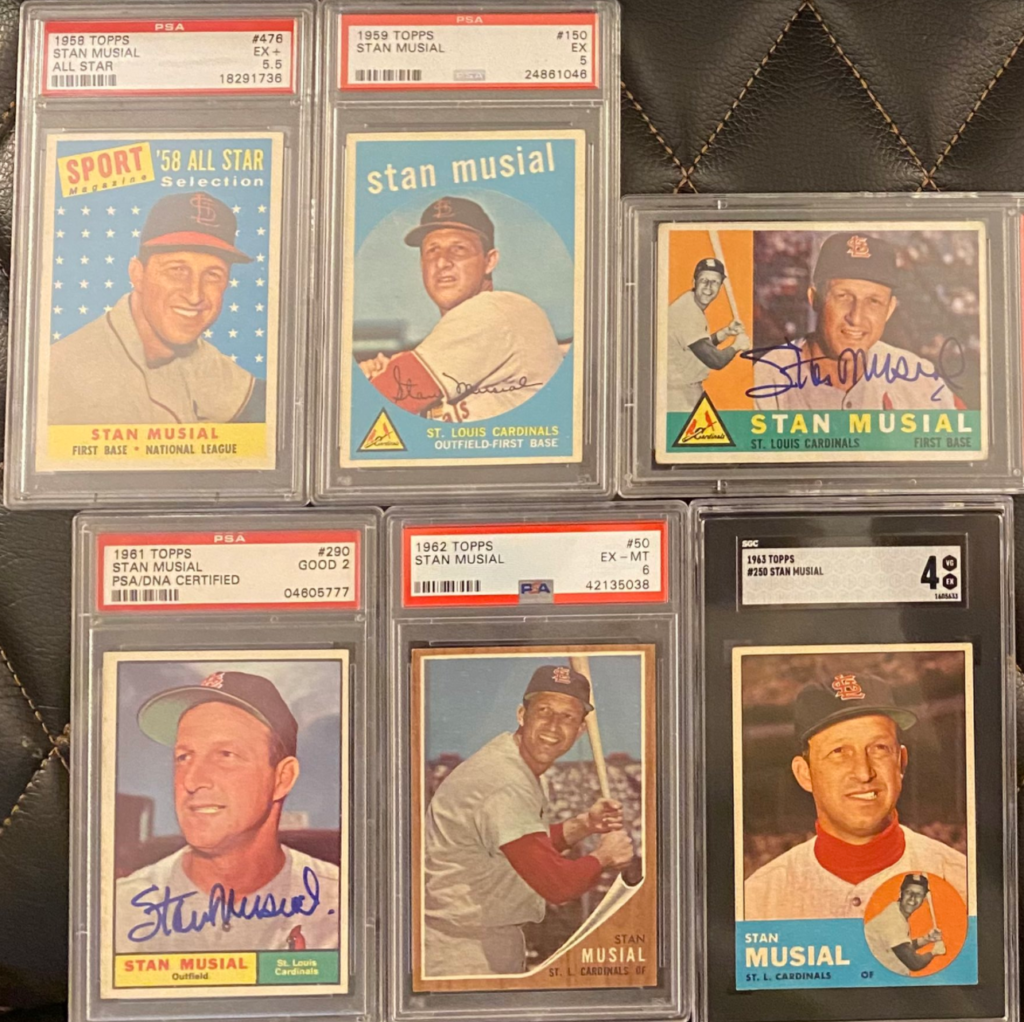
Musial ended his career with a .331 average, he racked up 3,630 hits, had 1,949 runs and 1,951 RBIs. Most of us do not think of Stan as a Home run hitter, but his 475 career homers and 25 homers per season average might have had him in the 500 HR Club had he had that extra year. Stan was on 20 straight All-Star teams, he was MVP 3 times, and his WAR of 128.6 was impressive enough.
The 1948 Leaf and 1948 Bowman cards are the recognized rookies, although the 1946 is being skipped because of scarcity and since it was issued in Cuba. The 1948 Bowman has 1,679 graded examples by PSA before nearly 400 more cards with “+” and “Q” grades. A PSA 4 graded Musial will average around $1,400 at the current time, although the 1948 entire Bowman black and white set is known for cards looking more like mugshots than professional baseball player photos. The 1948 Leaf Stan Musial card has only 942 base PSA grades of the Stan Musial card before another 203 cards with either “+” or “Q” examples. This card has a wider fluctuation in values but a PSA 4 should run $3,000 to $4,000 with some exceptions higher and some lower.
JACKIE ROBINSON
Jackie Robinson has risen in prominence to the vintage baseball card and sports collector community. He broke the MLB color barrier and his number 42 is now retired on every baseball team. Robinson’s rise in prominence has been continual and frankly may be a close exception to “the Mantle Premium” but only close. The 1952 Topps Jackie Robinson card and the 1953 Topps Robinson are the only two apples-to-apples comparisons until the 1956 Topps set, which also happens to be Robinson’s final recognized card as a player. Robinson did not have the 1951, 1952 nor 1953 cards in the Bowman set. Mantle doesn’t appear in the 1954 nor 1955 Topps sets.
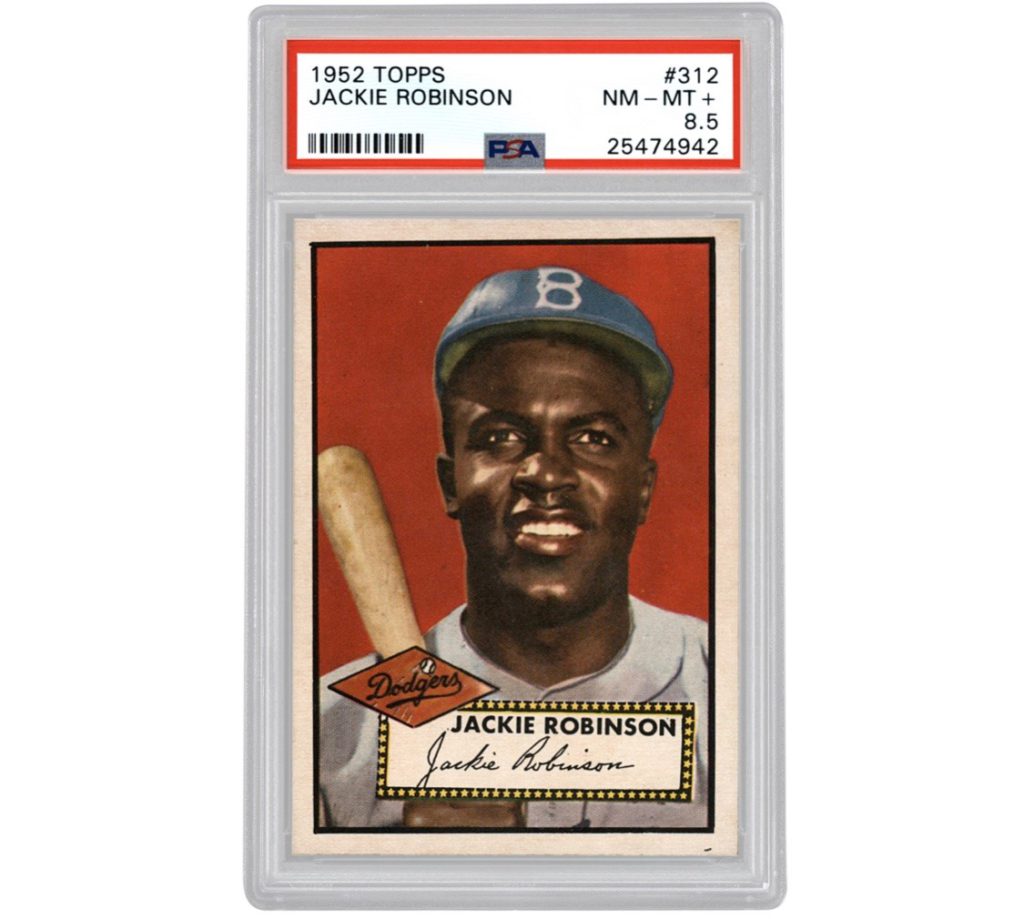
One key difference, and where Jackie Robinson cards can shine, is that Jackie was present in many cards while Mantle was still in high school. He has the famous 1948 Leaf issue with the yellow background. He also has the 1949 “ugly” Bowman card, and the extremely visually appealing 1950 Bowman card. He also has other less common cards from the 1940s. On these cards, the sky is the limit, but here are some recent ranges for PSA 4 graded examples over the last several sales:
- 1948 Leaf #79 range $15,000 to $18,000 (with some exceptions above and below)
- 1949 Bowman #50 range $6,000 to $8,000
- 1950 Bowman #22 range $3,700 to $4,300
The 1952 Topps Mantle is still more expensive than Robinson’s card in any nearly identical grades by a serious multiplier, and Robinson’s card was directly to the right of the Mantle card on the actual Topps sheets which were to be cut up for cards. To avoid the rookie premium and overall 1952 Topps premium over other years, this leaves the 1953 Topps and the 1956 Topps. Again, this will keep the comparisons in the PSA 4 graded examples since these are generally available at any given time.
The 1953 Topps Jackie Robinson in a PSA 4 will generally be valued in the $2,200 to $2,600 range at the present time. That’s about half of the Mantle PSA 4 price range of $5,000 to $6,000 at present.
The 1956 Topps baseball set has the gray and white backs, which can create some confusion. That said, many collectors do not care much about which one they own because they are just happy to have one. The Mantle premium is rather present here. The 1956 Topps Jackie Robinson’s average price ranges in PSA 4 graded examples are $600 to $800 in the gray back and $600 to $700 for the white-back. For a comparison in PSA 4 Mantle cards, the gray has an average range of $1,800 to $2,200 and the white back has an average range of $2,000 to $2,300. As a reminder, the only difference in these gray-back or white-back cards is the back.
IN THE END
Mickey Mantle is simply baseball’s Golden Boy when it comes to vintage baseball cards of the 1950s and 1960s. Looking through any of the price guides with cards from 1951 to 1969 (his last Topps card) will show that Mantle cards are only trumped by that year’s top rookie(s) cards(s) or some other scarcity with a long story behind it. How that holds up over time remains to be seen. Until then, that’s where we are now in the hobby of vintage sports cards.
Pricing data has been used from PSA, PWCC, VintageCardPrices.com and others. Population report data was from PSA and SGC, and career stats was from Baseball-Reference.com.


